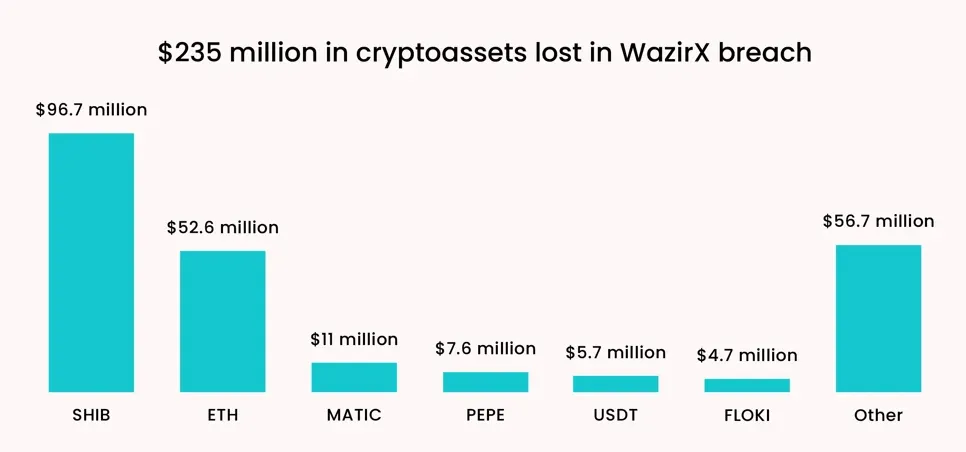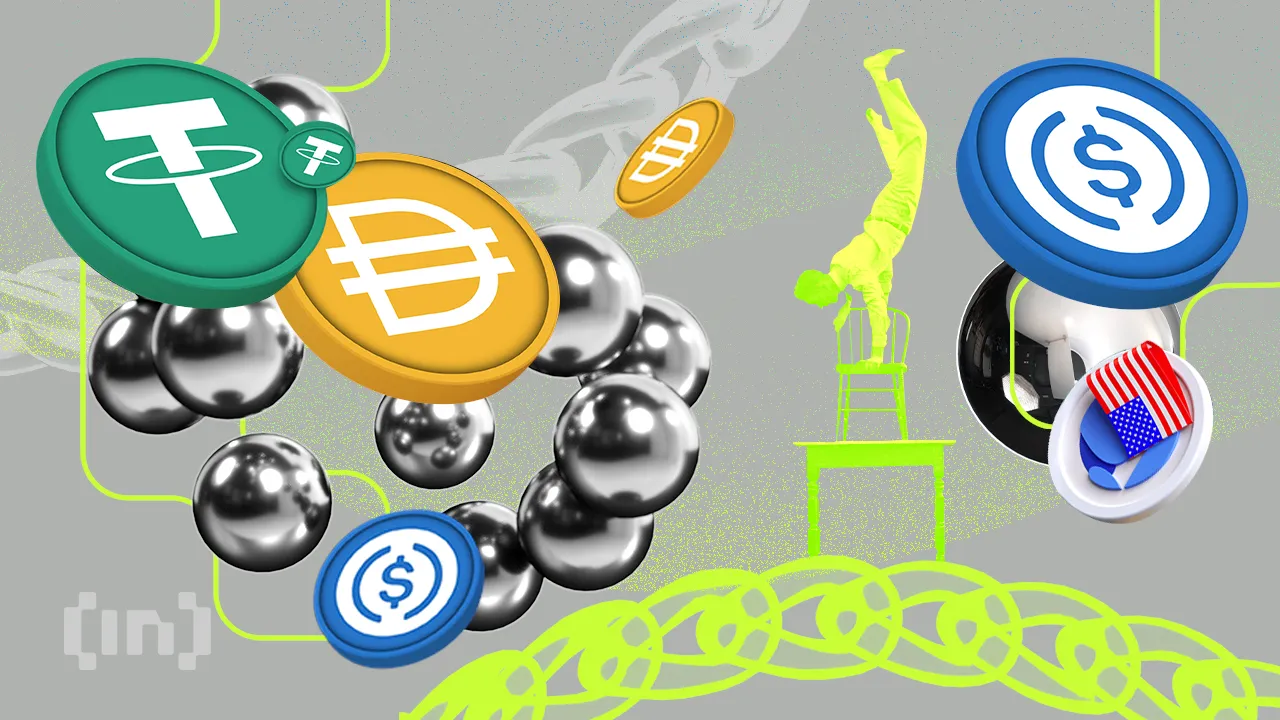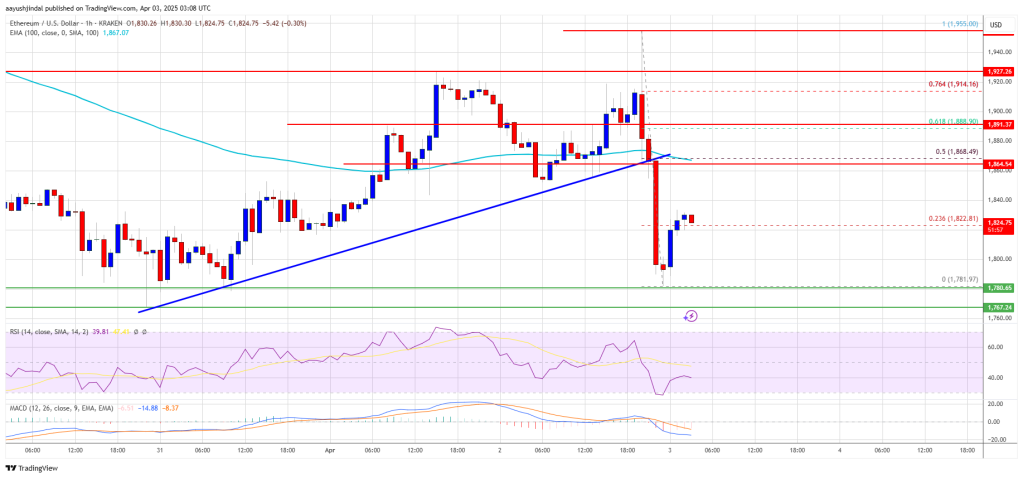Market
Key Conspirator Arrested Amid User Outrage

Indian Police have arrested SK Masud Alam, a resident of West Bengal, for his alleged role in the WazirX hack. Earlier this year, the hack resulted in over $230 million in cryptocurrency losses, as customers were unable to withdraw their funds.
Alam is accused of creating a fake account under the alias Souvik Mondal, which he allegedly sold via Telegram to the hacker. This account was later used to exploit the crypto exchange.
WazirX Hack Remains One of the Largest Security Incidents in 2024
According to local reports, the police chargesheet points to a lack of cooperation from Liminal Custody, a firm responsible for securing WazirX’s digital wallets. Despite multiple requests, Liminal reportedly did not provide critical information, raising concerns about its security practices.
The hack occurred on July 18 and targeted a multi-signature wallet with six signatories: five from WazirX and one from Liminal. It ultimately led to the loss of nearly 45% of WazirX’s stored assets.
In response, the exchange launched a recovery plan ten days later, aiming to return 55% of affected users’ holdings. The remaining 45% was to be issued in USDT-equivalent tokens, leaving users with locked assets.
WazirX also offered a $23 million bounty to incentivize the recovery of stolen funds and announced a $10,000 reward in USDT for any community member providing actionable intelligence. However, the hacker has yet to make any communications.

Customers are Outraged Over Missing Out on the Bull Market
For months, WazirX customers have been frustrated for not being able to use their locked assets. The frustration turned into outrage in recent weeks, as the crypto market is going through one of the biggest bull runs of the year.
Affected users are unable to liquidate their assets as prices keep increasing, potentially loosing out on substantial profits.
“Bull Run is here but WazirX users can only watch. Market up 50%+ since the hack. $BTC hitting 90k ATH but what’s the point when funds are frozen?” Indian crypto researcher Budhil Vyas wrote in an X (formerly Twitter) post.
Most recently, the exchange has launched a ‘rebalencing calculator’ to help affected users understand how they will be credited. However, there have been significant concerns from multiple users about the calculator.
Some users pointed out that WazirX is partially refunding them tokens that were not affected in the hack. Others have pointed out that the exchange’s portfolio has surged significantly in the current bull market, even recovering the entire loss from the hack. Yet, it’s still keeping user funds frozen.
“It seems WazirX created rebalancing calculator, just to confuse people & prove to the court that they are doing something. Wazirx has a habit of complicating simple things,” wrote Aditya Singh, the co-founder of Crypto India.
Overall, it seems that users are seemingly frustrated over the exchange’s fund recovery plans. Crypto hacks have become persistent throughout the year. Just last month, Blockchain lender Radiant Capital suffered a $50 million breach. Hackers have also targeted the US government’s crypto wallets, stealing nearly $20 million in recent months.
Disclaimer
In adherence to the Trust Project guidelines, BeInCrypto is committed to unbiased, transparent reporting. This news article aims to provide accurate, timely information. However, readers are advised to verify facts independently and consult with a professional before making any decisions based on this content. Please note that our Terms and Conditions, Privacy Policy, and Disclaimers have been updated.
Market
PiFest Celebrates Success – But Pi Coin Value Keeps Falling

Pi Network recently celebrated a milestone with its first PiFest in the Open Network, showcasing impressive participation numbers.
However, despite the event’s success, the value of Pi Coin (PI) continues to plummet, sparking concerns among its community of Pioneers.
PiFest Fails to Bolster Pi Coin’s Value
Pi Network’s team announced the results of its first PiFest, a community-driven event designed to integrate PI into local commerce. According to the post, over 125,000 registered and 58,000 active sellers participated in the event. In addition, 1.8 million Pioneers utilized the Map of Pi app for transactions.
The event facilitated a wide range of purchases, from groceries and clothing to professional services like design and automotive repairs, showcasing PI’s growing utility in the real world.
“PiFest is more than a celebration—it exemplifies and demonstrates Pi’s real-world utility. With Open Network fully live, PiFest shows how Pi can support genuine commerce and empower local economies worldwide,” the blog read.
Despite these achievements, the event failed to bolster PI’s market performance. According to data from CoinGecko, PI has fallen to the 31st position in the rankings. Currently, Pi Coin is trading 78.7% below its peak value. Meanwhile, it’s just 3.1% above its lowest recorded price.
As of press time, Pi Coin’s trading price was $0.6, a decline of 8.2% over the past day. Additionally, over the past 30 days, the token has experienced a significant drop of 64.5%.

This sharp downturn has fueled negative sentiment within the community.
“The comments are getting more and more negative from this accounts tweets. Finally looks like “some people” are waking up to this being a failure in terms of what promises were sold of what this would be, and obviously is not,” a user posted on X.
Meanwhile, users are increasingly considering converting their PI holdings to other assets amid the altcoin’s ongoing struggles to maintain its value. In fact, a Pioneer openly debated trading their PI for 1 Ethereum (ETH).
“Shortly after Pi launched, my holdings were worth around €7,000. I decided to hold onto them, expecting a potential Binance listing or a major announcement from the team—something that never happened. Now, my Pi is worth around €1,700, and I feel extremely disappointed,” a user wrote on Reddit.
The post sparked a heated discussion, with some users encouraging the trade, citing Ethereum’s more established market position. Despite this, many still continue to advocate for PI, believing in its long-term potential.
“Be patient. Trust the process. Believe in the Pi core team, developers, ecosystem and the community. Do not spread FUD. Hold your Pi. Never sell cheap. You will be rewarded big time in the future,” a Pioneer posted.
As the community grapples with the token’s underperformance, opinions remain divided. The outcome of this ongoing debate will likely depend on future developments and the Pi Network’s ability to regain investor confidence.
Disclaimer
In adherence to the Trust Project guidelines, BeInCrypto is committed to unbiased, transparent reporting. This news article aims to provide accurate, timely information. However, readers are advised to verify facts independently and consult with a professional before making any decisions based on this content. Please note that our Terms and Conditions, Privacy Policy, and Disclaimers have been updated.
Market
Stablecoin Regulation Bill Passes US House as Market Heats Up


The US House Financial Services Committee voted 32-17 to pass the Stablecoin Transparency and Accountability for a Better Ledger Economy (STABLE) Act of 2025, aimed at stablecoin regulation.
This legislative milestone comes amid growing activity in the stablecoin market. Competition is heating up as major traditional financial institutions prepare to enter the space.
STABLE Act Passes Committee Vote
Chairman French Hill and Representative Bryan Steil spearheaded the legislation (H.R. 2392). It seeks to establish a robust framework for stablecoin issuance, mandating 1:1 reserve backing, monthly audits, and AML requirements.
“This legislation is a foundational step toward securing the future of financial payments in the United States and solidifying the dollar’s continued dominance as a world reserve currency,” Representative Steil remarked.
The bill’s passage saw bipartisan support, with six Democrats voting in favor. Notably, this comes shortly after the US Senate Committee on Banking, Housing, and Urban Affairs greenlit the GENIUS Act. The bill passed in a bipartisan 18-6 vote.
“The bills await debate time on the floor and a vote in their respective chambers,” Journalist and Host of Crypto In America, Eleanor Terrett, noted.
According to Terrett, efforts are underway to align the two bills closely over the next few weeks. The aim is to address differences between the bills. Aligning them will make it easier to proceed without creating additional complications.
“If they can get them to be in relatively the same place on their own, it will avoid having to set up a so-called conference committee which is formed so members from both chambers can negotiate to create a final version of the bill everyone agrees on,” she added.
Stablecoin Competition Heats Up, but Are There Signs of a Purge?
The drive for legislation occurs alongside rising activity in the stablecoin market. Global players are joining the fray.
For instance, in Japan, Sumitomo Mitsui Banking Corporation (SMBC) and major entities have signed a Memorandum of Understanding (MoU). The MoU initiates joint discussions on the potential use of stablecoins for future commercialization.
“This Agreement will see SMBC, Fireblocks, Ava Labs, and TIS collaborate to develop a framework for stablecoin issuance and circulation, including exploring key technical, regulatory, and market infrastructure requirements both in Japan and further afield. This Joint Discussion will not only focus on pilot projects but will aim to concretely define use cases for ongoing business applications,” the notice read.
In addition, Bank of America’s CEO previously revealed plans to launch a stablecoin once proper regulation is in place. Notably, BeInCrypto reported last month that the Office of the Comptroller of the Currency (OCC) had granted national banks and federal savings associations permission to provide crypto custody and certain stablecoin services.
That’s not all. The state of Wyoming is set to launch its own stablecoin, WYST, in July. Fidelity has also announced similar plans. Moreover, President Trump-backed World Liberty Financial officially launched its USD1 stablecoin in late March. This highlights continued interest in stablecoin adoption across both private and public sectors.
Meanwhile, Ripple announced the integration of its Ripple USD (RLUSD) into Ripple Payments. Changpeng Zhao (CZ), former CEO of Binance, reacted to the development on X.
“Stablecoin war, I mean healthy competition, just getting started,” CZ said.
As competition intensifies, the stablecoin market is also facing growing pains. Despite new entrants gaining traction, some players face heightened scrutiny.
Justin Sun, founder of Tron (TRX), recently accused First Digital Trust of insolvency. Following Sun’s allegations, First Digital USD (FDUSD) temporarily depegged.
The market’s future may hinge on the survival of only the most compliant and resilient stablecoins. This leads to a potential “purge” where weaker players fail to meet the increasing regulatory and market demands.
Disclaimer
In adherence to the Trust Project guidelines, BeInCrypto is committed to unbiased, transparent reporting. This news article aims to provide accurate, timely information. However, readers are advised to verify facts independently and consult with a professional before making any decisions based on this content. Please note that our Terms and Conditions, Privacy Policy, and Disclaimers have been updated.
Market
Ethereum Price Recovery Stalls—Bears Keep Price Below $2K

Reason to trust

Strict editorial policy that focuses on accuracy, relevance, and impartiality
Created by industry experts and meticulously reviewed
The highest standards in reporting and publishing
Strict editorial policy that focuses on accuracy, relevance, and impartiality
Morbi pretium leo et nisl aliquam mollis. Quisque arcu lorem, ultricies quis pellentesque nec, ullamcorper eu odio.
Ethereum price attempted a recovery wave above the $1,880 level but failed. ETH is now trimming all gains and remains below the $1,880 resistance zone.
- Ethereum failed to stay above the $1,850 and $1,880 levels.
- The price is trading below $1,850 and the 100-hourly Simple Moving Average.
- There was a break below a key bullish trend line with support at $1,865 on the hourly chart of ETH/USD (data feed via Kraken).
- The pair must clear the $1,865 and $1,890 resistance levels to start a decent increase.
Ethereum Price Fails Again
Ethereum price managed to stay above the $1,800 support zone and started a recovery wave, like Bitcoin. ETH was able to climb above the $1,850 and $1,880 resistance levels.
The bulls even pushed the price above the $1,920 resistance zone. However, the bears are active near the $1,950 zone. A high was formed at $1,955 and the price trimmed most gains. There was a break below a key bullish trend line with support at $1,865 on the hourly chart of ETH/USD.
A low was formed at $1,781 and the price is now consolidating near the 23.6% Fib retracement level of the downward move from the $1,955 swing high to the $1,781 low.
Ethereum price is now trading below $1,850 and the 100-hourly Simple Moving Average. On the upside, the price seems to be facing hurdles near the $1,850 level. The next key resistance is near the $1,865 level and the 50% Fib retracement level of the downward move from the $1,955 swing high to the $1,781 low.

The first major resistance is near the $1,920 level. A clear move above the $1,920 resistance might send the price toward the $1,950 resistance. An upside break above the $1,950 resistance might call for more gains in the coming sessions. In the stated case, Ether could rise toward the $2,000 resistance zone or even $2,050 in the near term.
Another Decline In ETH?
If Ethereum fails to clear the $1,865 resistance, it could start another decline. Initial support on the downside is near the $1,800 level. The first major support sits near the $1,780 zone.
A clear move below the $1,780 support might push the price toward the $1,720 support. Any more losses might send the price toward the $1,680 support level in the near term. The next key support sits at $1,620.
Technical Indicators
Hourly MACD – The MACD for ETH/USD is gaining momentum in the bearish zone.
Hourly RSI – The RSI for ETH/USD is now below the 50 zone.
Major Support Level – $1,780
Major Resistance Level – $1,865
-

 Regulation19 hours ago
Regulation19 hours agoKraken Obtains Restricted Dealer Registration in Canada
-

 Altcoin15 hours ago
Altcoin15 hours agoHere’s Why This Analyst Believes XRP Price Could Surge 44x
-

 Altcoin23 hours ago
Altcoin23 hours agoWhat’s Fueling The Shibarium Boost?
-

 Bitcoin21 hours ago
Bitcoin21 hours agoLummis Confirms Treasury Probes Direct Buys
-

 Altcoin11 hours ago
Altcoin11 hours agoFirst Digital Trust Denies Justin Sun’s Allegations, Claims Full Solvency
-

 Altcoin21 hours ago
Altcoin21 hours agoFranklin Templeton Eyes Crypto ETP Launch In Europe After BlackRock & 21Shares
-

 Altcoin14 hours ago
Altcoin14 hours agoHow Will Elon Musk Leaving DOGE Impact Dogecoin Price?
-

 Ethereum13 hours ago
Ethereum13 hours agoWhy A Massive Drop To $1,400 Could Rock The Underperformer























